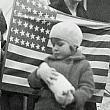Booze and the "Halls"
by Winthrop D. Lane
Mention has been made of the "halls" in Grand Rapids, forty or fifty buildings or parts of buildings owned by private societies among the foreign groups and used as meeting places and also for social gatherings. Grand Rapids seems to have had more than its share of societies of this sort. Among them were the Pulaski Guards, the Red Hussars, the sacred Heart Aid Society, the Hibernian Athletic Club and the Lithuanian National Society. There were more Polish societies, perhaps, than of any other one nationality.
Ostensibly these societies existed for wholly desirable purposes. Some of them paid sick and death benefits to members or the members' families, some had nationalistic or patriotic purposes, a few were athletic clubs, and some were semireligious in nature. Undoubtedly many of them filled a real social need in the life of the city. Unfortunately, however, they all had a common feature a bar room. Being private incorporated societies, they were permitted to dispense liquor upon the mere payment of the federal liquor tax of $25 a year. Though they were supposed to sell liquor only to members, most of them actually sold it to any one who had the price of a drink; the most rigid restriction placed upon purchasers was that they should be "introduced" by members.
Excerpted from "What Elimination of the Liquor Traffic Means to Grand Rapids" by Winthrop D. Lane, The Survey, November, 6 1920

 facebook
facebook

